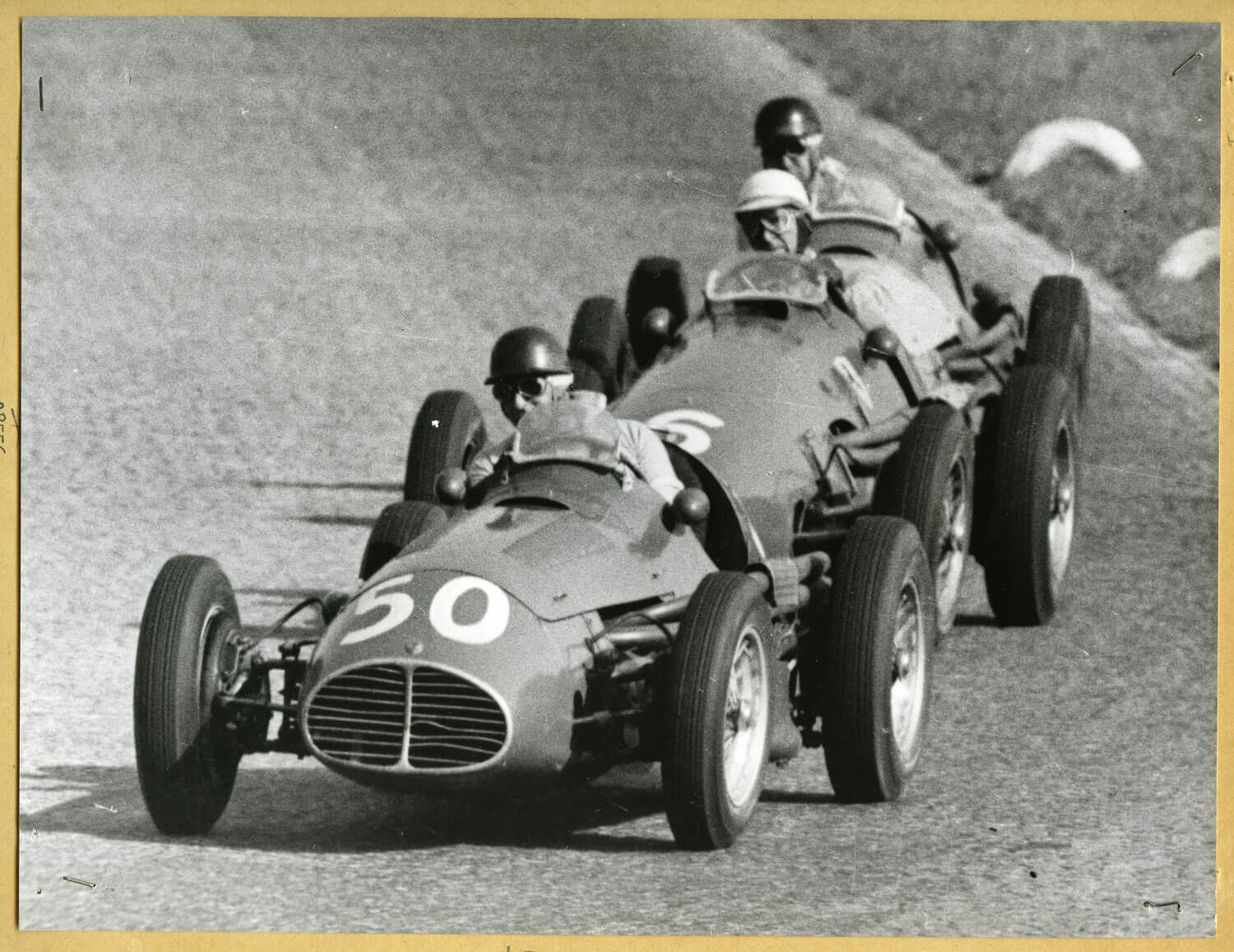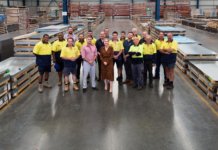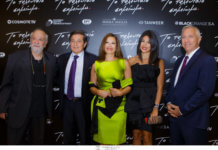A Conversation with Alberto Pirelli, Director, Pirelli & C., Italy
The Pirelli & C. headquarters, a vast complex of modern glass and iron building in the Milanese industrial area of Bicocca, is surprisingly charming for one of the largest tyre producers in the world. A fun-loving and jovial atmosphere permeates the grounds despite its rather formidable size and modern build.
The Pirelli story began over 144 years ago when founder Giovanni Battista Pirelli entered the rubber industry. The archives at the Pirelli Foundation, established in 2010, tells the vast story of this global tyre leader and shows the family behind the company to be dedicated to documenting its progress over the decades. Open to the public, the archival collection is in fact considered a part of Italian heritage. In discovering the story of Pirelli it is clear that throughout all this time, the company remains committed to being at the forefront of technology and development in its industry.
Tharawat Magazine met Director of Pirelli & C., Alberto Pirelli, in his bright and lively office to listen to the stories behind this formidable company, discuss the high-tech tyre industry and catch racing fever.

The History
Having thrived through industrialisation, survived two World Wars and numerous economic crises, Pirelli represents a piece of Italian history. Giovanni Battista Pirelli began his entrepreneurial journey in 1872, bringing a new industry to Italy – rubber. The family rubber product manufacturer was known for its inventiveness and rapid expansion and pioneered many rubber products ranging from toys to raincoats and shoes. In 1879, Pirelli began producing cables and conductors for electrical energy and communication. The family business took the industry lead for many decades to come. By the 1920s, nearly all high-tension power lines in the world used the innovative technologies provided by Pirelli, which was also the world leader in laying underwater telegraphic networks.
Alberto Pirelli explains, “In cables, we were number one in the world. We were involved in huge projects for many decades. In the late 19th century Pirelli was already producing underwater cables to be installed from the Mediterranean to the Red Sea in Somalia and other projects where the cables were positioned at 3.800 meters below sea level. Technologies today are so much more advanced but, at the time, we were the pioneers.”
Pirelli was one of the first Italian businesses to expand into Latin America in the early 1900s, and since aggressively pursued and successfully achieved global growth. These various stages of development were rigorously documented.

“One of the nicest things to read are the diary entries my grandfather wrote when he went to the US to meet Mr. Edison and discuss cable contracts in the early 1900s,” says Alberto, holding up the last print edition of the journal. “He was 24 years old at the time. His father called him and told him to go see a rubber plantation in Brazil since rubber supply, availability and quality was essential. Imagine travelling all that way in those times from Washington D.C. to Manaus, in the Brazilian Amazon. At the same time, he had to evaluate the potential of Brazil as a tyre market for future investments. He met so many interesting characters, and while on a boat that took him down the Amazon River, described quite an adventure. He decided that they could start purchasing rubber from Brazil as a way for us to close the supply and demand loop.” Pirelli looks back fondly on these times when market entry was based on a gut feeling and nerve. “Sometimes it feels like today, we are all just thinking of numbers and spreadsheets. At times, we forget that instinct is just as important.”
Courage is something the Pirellis have never lacked, even when it meant reinventing themselves at several points throughout their history. The brand remains best known for its huge success in the tyre industry.
“We started making tyres late, in 1907. We began by making small tyres and then later went on to produce for cars and trucks. We understood that we were much smaller than our competitors, but knew that we needed technology, communication and brand awareness to grow. These three pillars allowed us to win over the market in Italy and around the world.”
The results of their strategy are plainly visible today. Currently the fifth largest tyre maker in the world, Pirelli exists in over 160 countries, has 22 production facilities located across four continents and employs 39,000 people.

The Fourth Generation
In his Bicocca office, Alberto Pirelli sits at a large white table contently smiling at us. It is hard to imagine that this quiet, elegant man carries the responsibility of perpetuating the legacy of the fourth generation company. When we asked him whether or not he always felt “made for the job”, he smiled and gave an unexpected answer.
“I am actually a zoologist specialised in fish farming. As you may have already guessed, that has no overlap with the family business.” Alberto admits that he was partly motivated to branch out in order to prove that he could build his own career and stand on his own two feet. In the end, the cry of the family legacy was far too strong. “A little voice called to me. After working on my own for five years, I joined the family business.” His first appointment in the mid-80s was as CEO of tyre operations in Turkey. “I enjoy working in Pirelli very much. I do still read about fish farming now and again,” he says with good humour.
Having a scientific background has been advantageous to his career in many ways. “I am not a chemist or an engineer, so I can’t make decisions regarding the exact needs for tyre development. But, having the mentality of a scientist – the scientist’s rigour – helps me approach things with method. What we do here is all about precision.” The requisite applies to everyone at Pirelli. “Most people do not have a purely business or purely scientific background, but a combination of the two.”

The Focus
While the Pirelli brand initially made its name by manufacturing a variety of rubber products, the business now focuses entirely on tyres. After having sold off its century-old cable business in 2006, Pirelli withdrew from its last non-tyre related business in 2010.
According to Alberto, the company chose to narrow its focus. “There is a great risk of losing money when you are diversified. You may end up doing everything but without being a leader in anything. There are probably products that we should have exited much earlier, but we learnt over the years. Today Pirelli either excels or exits – that is our guiding principle.”
“We want to focus,” explains Pirelli. “We are continuously investing in R&D, which is why we are a top player. What distinguishes us from so many others is that we are now able to offer a full solution. We don’t just sell tyres – we design systems.” Alberto is referring to the advancements Pirelli has made in optimising the technology that goes into tyres used in prestigious races and by big car brands like Porsche, Bentley and Maserati. “We are amongst the first choice for most of the big brands. Cars are becoming more intelligent and tyre performance needs to be a perfect fit. Nowadays when you change tyres, the electronic systems will tell you if you have the right ones. This basically means that we are deeply integrated into the designs of these brand vehicles. We are not just a tyre producer we are also a high-tech company.”

The Race
Pirelli products have always had a strong image. The rich family archive includes old product advertisements ranging from raincoats to high heels and rubber toys. It is safe to say that racing is perhaps what the brand is best known for.
“In 1907 we became part of a fascinating and extreme adventure,” states Alberto. “We had just started producing tyres. We were new to the industry, competing against well-established giants like Michelin, when a man named Prince Scipio Borghese came to tell my great-grandfather about this crazy race from Peking to Paris. They both decided to participate,” he chuckles. “Pirelli provided the tyres and Borghese won. His crossing the finish line in Paris marked the beginning of our involvement in racing, which has greatly impacted our image. The race was well documented because a journalist went with them and handed in daily reports. To think, there were no roads and no assistance at that time!”
After this rather sensational beginning of their involvement in sports, Pirelli became a protagonist in all kinds of races including rallies and Formula 1. For Alberto Pirelli the commitment goes beyond just building brand image. “I believe we have built better technologies because of the challenges we face in extreme sports. These races are a huge stress test. The materials, tyre structures, mechanics… all these elements are pushed to the limit during a race. We take back information and insights which we then integrate into our normal premium tyres.”
Alberto further explains how involvement in sports has allowed Pirelli to ease its way into new markets, particularly those in which they were not well known. “We made the choice to return to Formula 1. When you enter, you can’t simply quit after a few years. It is expensive, complex and only pays off after a long time – it is a long-term investment. F1 is not so much linked to the perception of the product. It is actually more of a branding opportunity, contrary to the rallies where audiences and participants are particularly well informed about products.”
Pirelli recognises the importance of being involved in sports for company culture and the transference of values. “The passion the family has for the race is shared by most Pirelli employees. We have race fever which keeps motivation very high! I am still racing as well and simply can’t stop doing it.”
How does the Pirelli family share its values with over 39,000 employees? For Alberto, only one tactic works, “You have to be consistent and lead by example. There are many elements that can be formalised, such as CSR, which set the tone for the company. However, as leaders, we have to live our values. Trust, respect and responsibility are something you can demonstrate on a daily basis.” This leadership practice has been consistent throughout Pirelli history. Alberto smiles, “We have, on the headquarter grounds a hunting lodge, which belonged to the Arcimboldi family, who ruled Milan in the fifteenth century. On the walls of the lodge’s dining room you can read the motto ‘Duty always…’. It is a good incentive to eat fast and never to forget the responsibility we have. My grandfather’s book also speaks about the right ways to manage and lead people. People management has been at the centre of his and of Pirelli’s priorities. What he says in those pages very much applies today. The concepts are still relevant.”

The Growth
Pirelli always knew how to scale. Starting out by introducing a new industry to the Italian market in the 1870s, the company already boasted thousands of employees by the turn of the century. The business went public in 1922, in another move to boost its growth to the next level.
“The situation with the banks was difficult post WW1, so we listed in order to grow.” Pirelli wanted to continue investing in the products. It was never about size but about innovation, good practice and excellence. “We were bigger when we still produced cables, but the focus we now have on tyres allows us more significant industry growth,” states Alberto.
In 2015, the company made a sensational move by joining forces with Chemchina, a Chinese industrial group now a main shareholder of Pirelli. Alberto Pirelli is visibly proud of this recent achievement and its implications. “We are particularly happy with this fit. Working with industrial partner Chemchina brought five truck factories to Pirelli. We went from being ranked 8th to 4th in providing for trucks. Our board meetings are also so interesting now. Russians, Chinese, Italians and international banks are all present. We actually need simultaneous translation! The diverse economic and political backgrounds significantly add to the company’s future chances. We operate in this global way while maintaining our headquarters and R&D in Milan.”

The Family
The Pirelli story continues to carry through strong minded and charismatic family members. “First of all, we must look to the family to see if there are members willing to carry on,” says Alberto Pirelli, rather pragmatically. “My son is currently working with us. Time will tell if this will be something he wants to do long-term. It has to be a calling. My father never pressured me and I would never pressure my own son. The most important thing is to make sure that the values of the business continue. Pirelli will always be present through its values, especially during moments of crisis. We have faced difficult financial times and serious identity crises. We survived and continued our growth because we always continued to stand for what we are and to represent our good name.”
Tharawat Magazine, Issue 29, 2016














